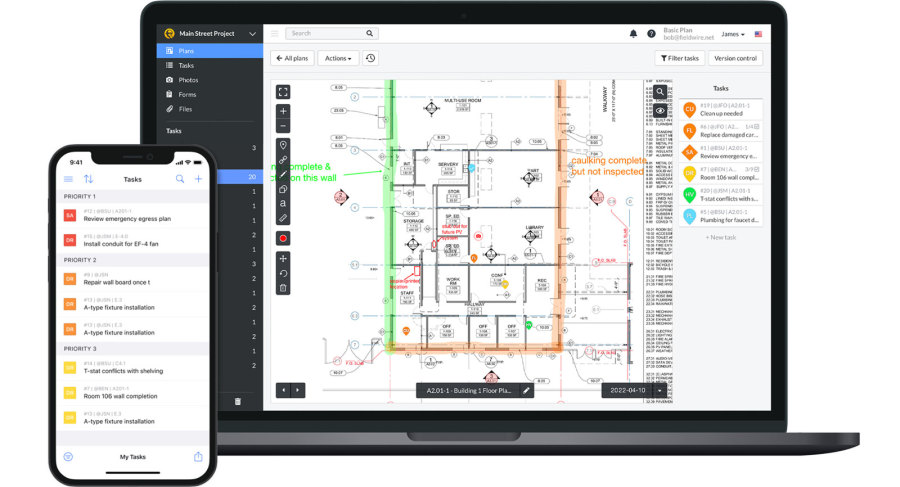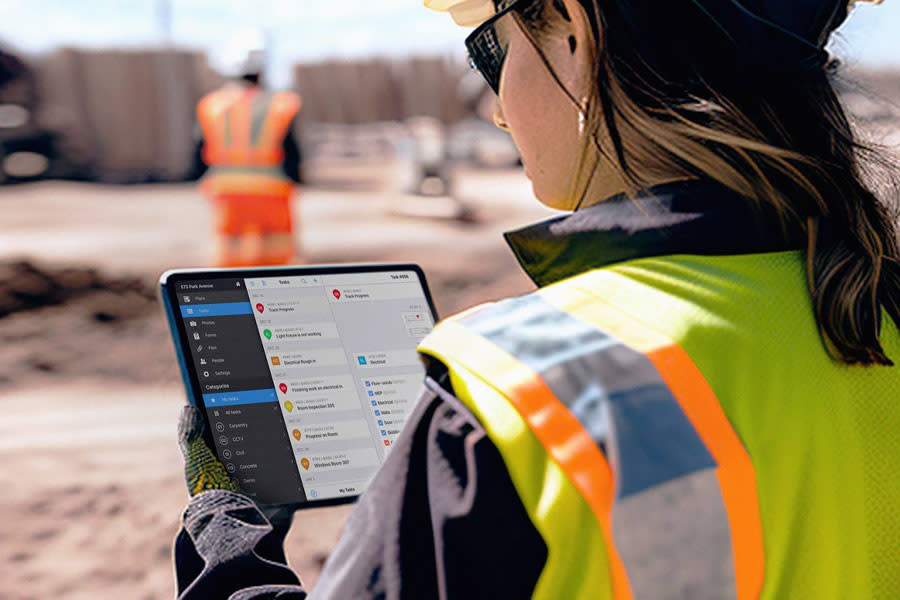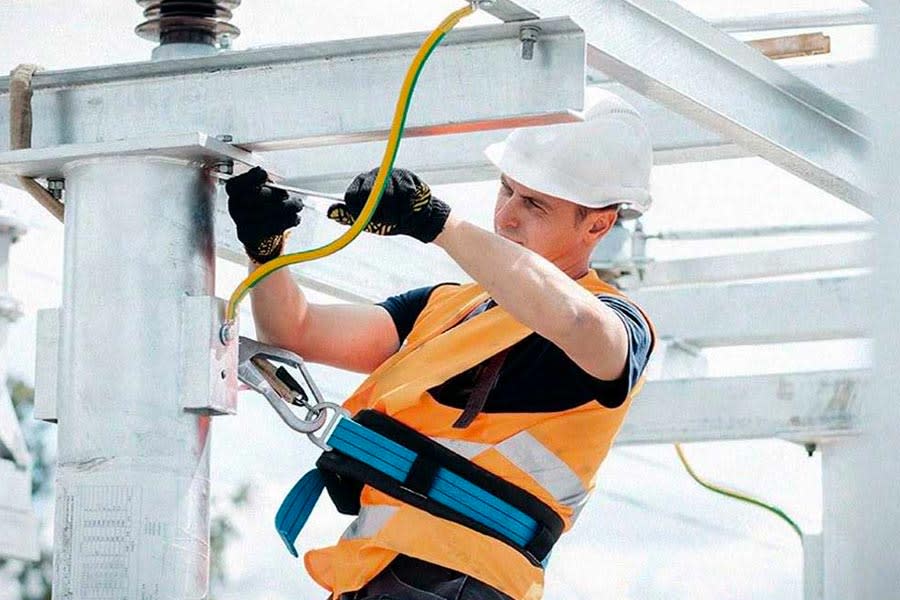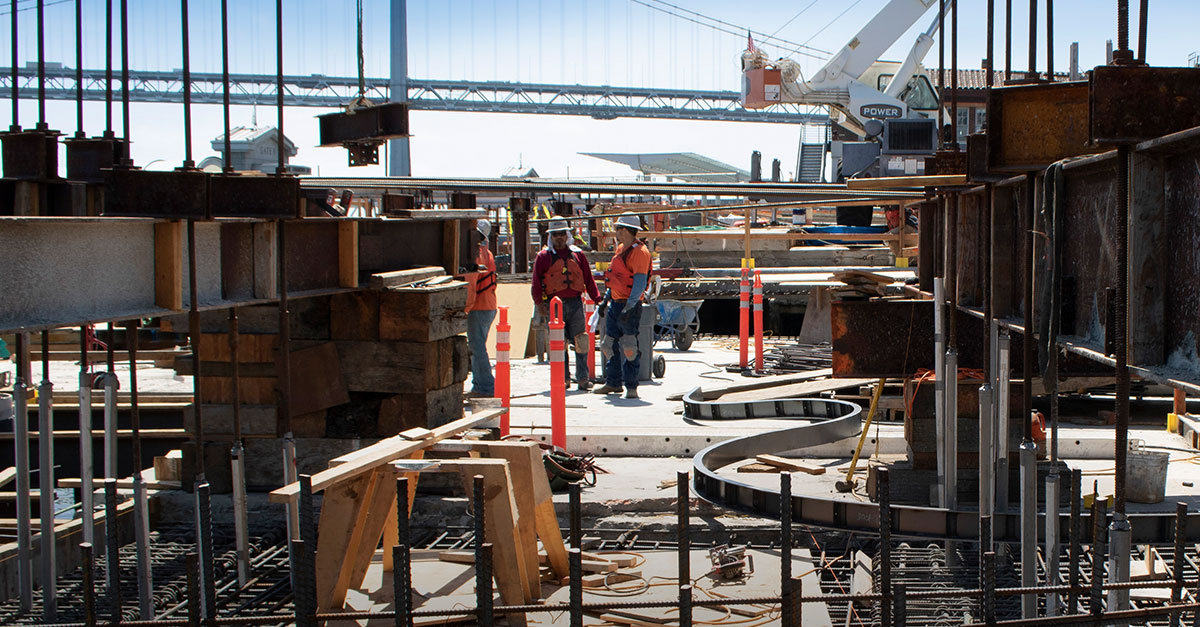5 common safety violations in construction and how to avoid them
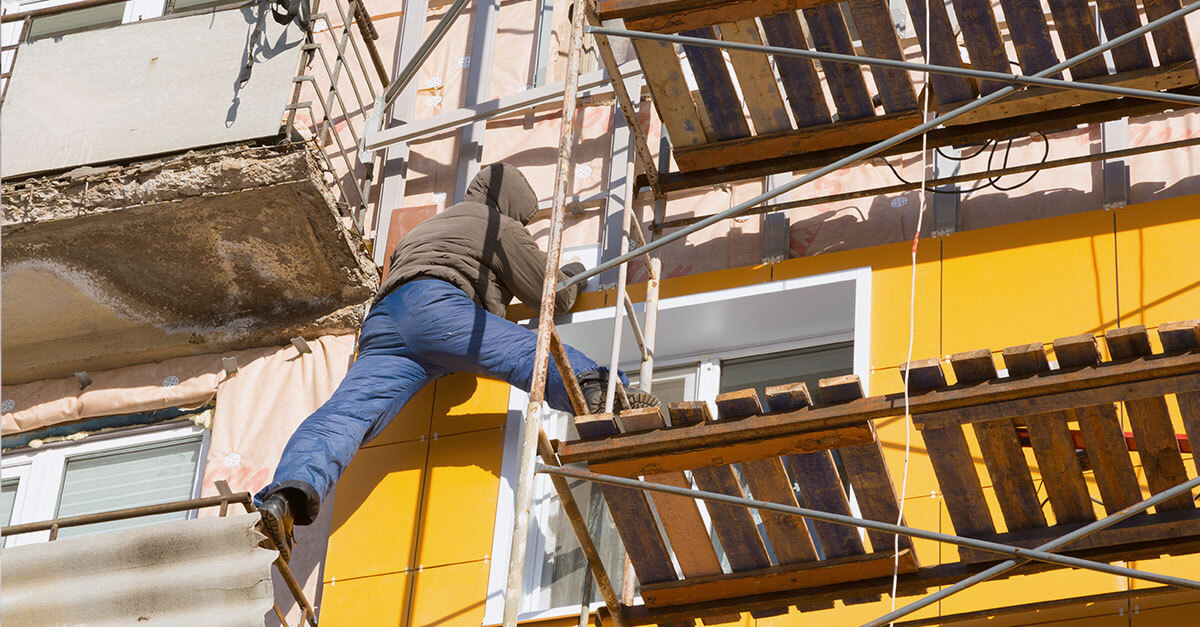
With so many moving parts onsite, ensuring all the proper safety procedures are being taken can be a challenge for construction contractors. However, following safety protocols isn’t optional. A single violation can cost up to $15,625 and a repeatable violation could cost up to $156,259. In order to avoid these costly mistakes and ensure employees’ health and safety, we’ll give you a breakdown of the five most common violations in construction and how you can avoid them.
Fall Protection
If you’ve been in the construction industry for a while, this #1 OSHA violation should come as no surprise. Fall protection is the most commonly cited safety violation for the past ten years.
To avoid common fall hazards, focus on daily pre-planning. Meet with team members daily to ensure that the proper safety measures, such as installing guardrail systems, are in place. Be sure to also provide your team with the proper equipment, such as appropriate ladders, for the specific job they’re working on. We’ll get into more detail on ladders below.
Scaffolding
Some might say scaffolding fits into the general category of “fall protection.” However, scaffolding consistently comes up as a common safety violation in its own right. When it comes down to it, these violations happen mostly due to poorly constructed equipment. Without nailing a scaffold to a mudsill, for example, contractors run the risk of allowing the scaffold to move too freely. This flexibility puts crew members at risk of falling from the scaffold but also creates the potential to injure others around it.
To avoid this violation make sure to partner with a licensed contractor who has a detailed plan to assemble scaffolds appropriately. Make sure part of their plan includes nailing the structure to a mudsill and installing a mid-rail to prevent a crew member from falling off either side. Another way to avoid this safety violation is to ensure damaged equipment is red-tagged and replaced. This way, you’ll construct a secure and safe scaffold for your team members onsite.
Ladders
Ladders are not multi-purpose. Let me say that again - ladders are not multi-purpose. By not using the right ladder for a specific task, contractors run the risk of their field crews getting injured or worse. Falls, commonly from ladders, account for eight percent of all occupational fatalities. A common example of this is when crew members use an A-frame ladder for a task that requires a ladder to lean against a wall. In this case, the ladder could potentially fall out from underneath the worker.
To avoid this common safety violation, contractors must plan the work schedule proactively and ensure that the appropriate equipment is available for each task. By providing field crews with different ladders for different tasks, they’re more likely to complete the work with a reduced chance of injury.
Respiratory Protection
During construction, harmful pollutants can be created as a result of the work being performed onsite. One of the most common safety violations occurs during the ground-breaking phase, where toxic dust is generated and released into the air. Exposure to this dust can lead to long-term medical complications, including damage to the lungs.
A couple ways to ensure this safety violation doesn't happen is through proper training of how to use appropriate PPE, so crew members can learn how to identify damaged or ill-fitting PPE. Another way to avoid this violation is creating processes like “wet methods” that can help to control the dust or pollutants and protect the safety of crew members.
Hazard Communication
Hazard communication aims to ensure that chemicals on a worksite are labeled accurately, including details about any potential hazards like flammability. Material safety data sheets (MSDS) also provide this information if it is not on the label. One common violation of hazard communication is the failure to update MSDS regularly. In such cases, workers may mishandle hazardous chemicals, leading to potential risks and hazards.
To avoid the safety violation related to improper hazard communication, contractors can add weekly tasks to their calendars to update MSDS and to check all chemicals present on the job site are correctly labeled. Contractors can also make it required to update the datasheet as they handle the chemical. This way, crews are using chemicals with the highest safety measures in mind.
Don’t let these common, costly safety violations affect your performance in the field. By taking the time to train and adhere to the right protocols, you can ensure your team members’ safety while moving your project forward.
Originally published on May 19, 2021

 Natalie Mackay •
Natalie Mackay • 